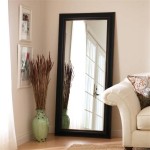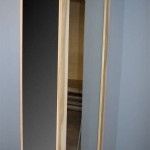How to Screen Mirror Samsung to Sony Bravia
Screen mirroring offers a convenient way to share content from a Samsung device to a larger display like a Sony Bravia TV. This functionality allows users to enjoy photos, videos, and even mobile games on a bigger screen, enhancing the viewing experience. Several methods facilitate this connection, each with its own set of advantages and requirements.
Using Smart View (Wireless Screen Mirroring)
Smart View, a built-in feature on most Samsung devices, provides a straightforward method for wireless screen mirroring. This feature utilizes the Wi-Fi Direct standard, allowing devices to connect directly without needing an external Wi-Fi network. This method offers convenience and simplicity for quickly sharing content.
To use Smart View, ensure both the Samsung device and the Sony Bravia TV are connected to the same Wi-Fi network. Then, access the Quick Panel on the Samsung device by swiping down from the top of the screen. Locate and tap the "Smart View" icon. The device will scan for available displays. Select the Sony Bravia TV from the list of discovered devices. The TV may prompt for a connection confirmation; accept the request to initiate screen mirroring.
Utilizing Miracast for Wireless Connection
Miracast provides another wireless screen mirroring option. Like Smart View, Miracast relies on Wi-Fi Direct, enabling a direct connection between devices. Miracast is often built into modern smart TVs, including Sony Bravia models. This method ensures high-quality streaming with low latency.
Confirm that the Sony Bravia TV supports Miracast by checking its settings menu. On the Samsung device, access the screen mirroring settings, which may be labeled "Screen Mirroring," "Wireless Display," or "Cast." The device will search for available Miracast displays. Select the Sony Bravia TV from the list. The TV might display a confirmation prompt; accept the connection to begin screen mirroring.
Connecting with a Chromecast Device
Google Chromecast provides a versatile solution for screen mirroring. By plugging a Chromecast dongle into an HDMI port on the Sony Bravia TV, users can stream content from their Samsung device. This method requires a Wi-Fi connection for both the Samsung device and the Chromecast.
Ensure the Chromecast is properly set up and connected to the TV. Open a compatible app on the Samsung device, such as YouTube or Netflix. Look for the Cast icon within the app and tap it. Select the Chromecast device connected to the Sony Bravia TV from the list of available devices. The chosen content will then stream directly to the TV.
Screen Mirroring via Third-Party Apps
Several third-party apps offer screen mirroring functionality. These apps typically utilize the same underlying technologies as the built-in methods, providing alternative interfaces and features. Researching and selecting a reputable app from a trusted source is essential.
Download and install a compatible screen mirroring app on the Samsung device from a reputable app store. Ensure the Sony Bravia TV is compatible with the chosen app. Follow the app's instructions to establish a connection between the Samsung device and the TV. These instructions may vary depending on the specific app but typically involve selecting the TV from a list of discovered devices.
Connecting with an HDMI Cable (Wired Connection)
A wired connection using an HDMI cable offers a reliable, high-quality screen mirroring solution. This method eliminates potential Wi-Fi interference and latency issues. It requires a compatible adapter for the Samsung device and an available HDMI port on the Sony Bravia TV.
Acquire a USB-C to HDMI adapter compatible with the Samsung device. Connect the adapter to the Samsung device's charging port. Connect an HDMI cable to the adapter and the HDMI port on the Sony Bravia TV. Switch the TV's input source to the HDMI port connected to the adapter. The Samsung device's screen should be mirrored on the TV. This method often mirrors the device's screen exactly, including the user interface and any notifications.
Troubleshooting Common Issues
Several factors can occasionally disrupt screen mirroring. Checking network connectivity, ensuring device compatibility, and restarting devices often resolves common issues. Consulting user manuals or online support resources can provide further assistance.
Verify that both the Samsung device and the Sony Bravia TV are connected to the same Wi-Fi network if using a wireless connection method. Ensure both devices support the chosen mirroring technology. Restart both the Samsung device and the TV. Check for any available software updates for both devices. If problems persist, consult the user manuals or contact the respective manufacturers’ support teams.
Optimizing Screen Mirroring Performance
Several practices can optimize screen mirroring performance. Minimizing background processes on the Samsung device and ensuring a strong Wi-Fi signal can enhance the experience. Adjusting the screen resolution on the Samsung device might further improve performance.
Close unnecessary apps running in the background on the Samsung device. Position the Samsung device closer to the Wi-Fi router to ensure a stronger signal. Adjust the screen resolution on the Samsung device to a lower setting if performance issues persist. Consider using a 5GHz Wi-Fi network if available, as it generally offers faster speeds and less interference than a 2.4GHz network.

How To Screen Mirror Samsung Galaxy Sony Bravia Tv

Top 3 Ways To Screen Mirror Android Sony Tv

How To Screen Mirror Samsung Galaxy Sony Bravia Tv
Can I Connect Iphone With My Sony Tv Screen Mirroring Quora

Mirror Your Android Or Iphone Screen To A Samsung Sony Smart Tv

How To Screen Mirror Samsung Galaxy Sony Bravia Tv

Screen Mirroring Sony Tv With Samsung Galaxy Phone Wirelessly

Galaxy S10 S10e How To Screen Mirror Sony Bravia Tv Wireless Connect

How To Screen Mirror Your Android Sony Smart Tv En Alfanotv
How To Mirror From My Samsung Galaxy Tab S A Sony Bravia Tv Quora








